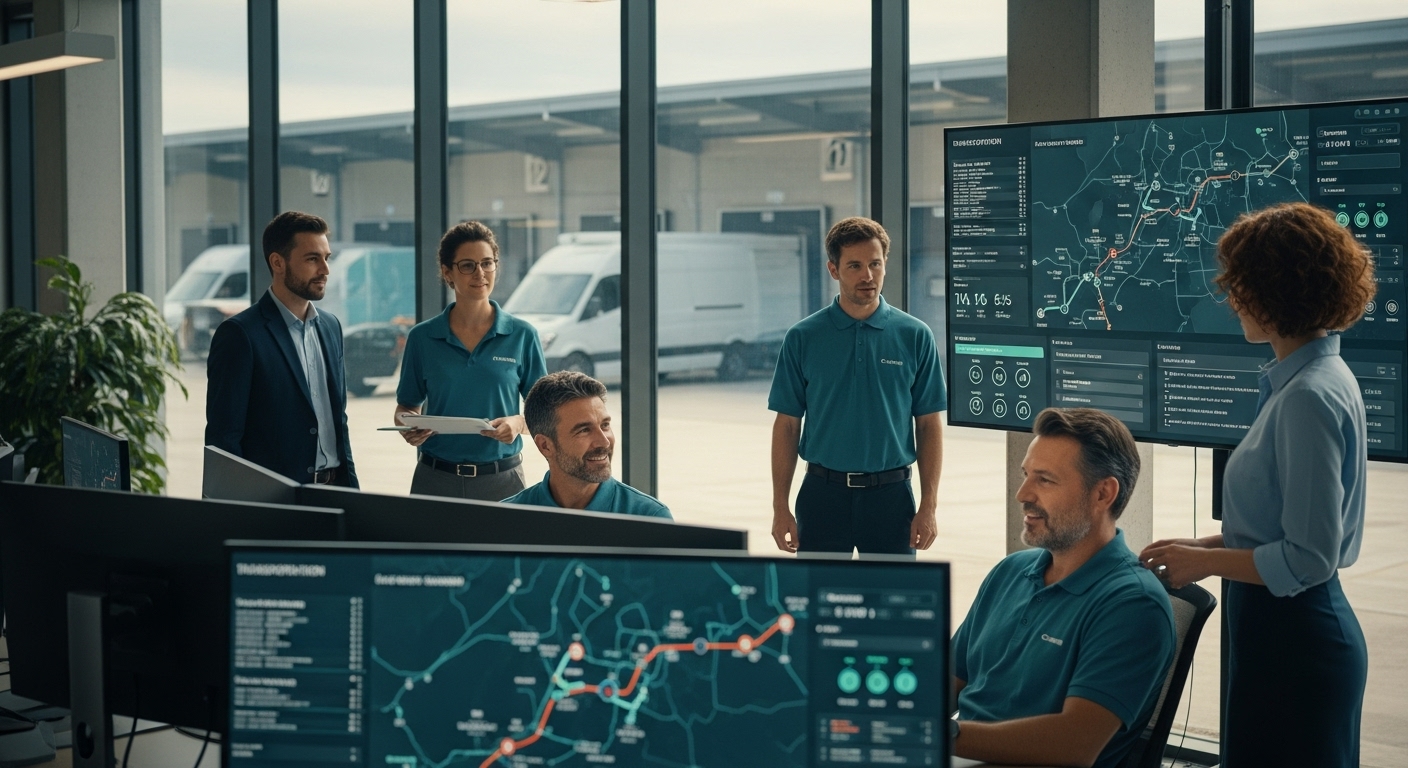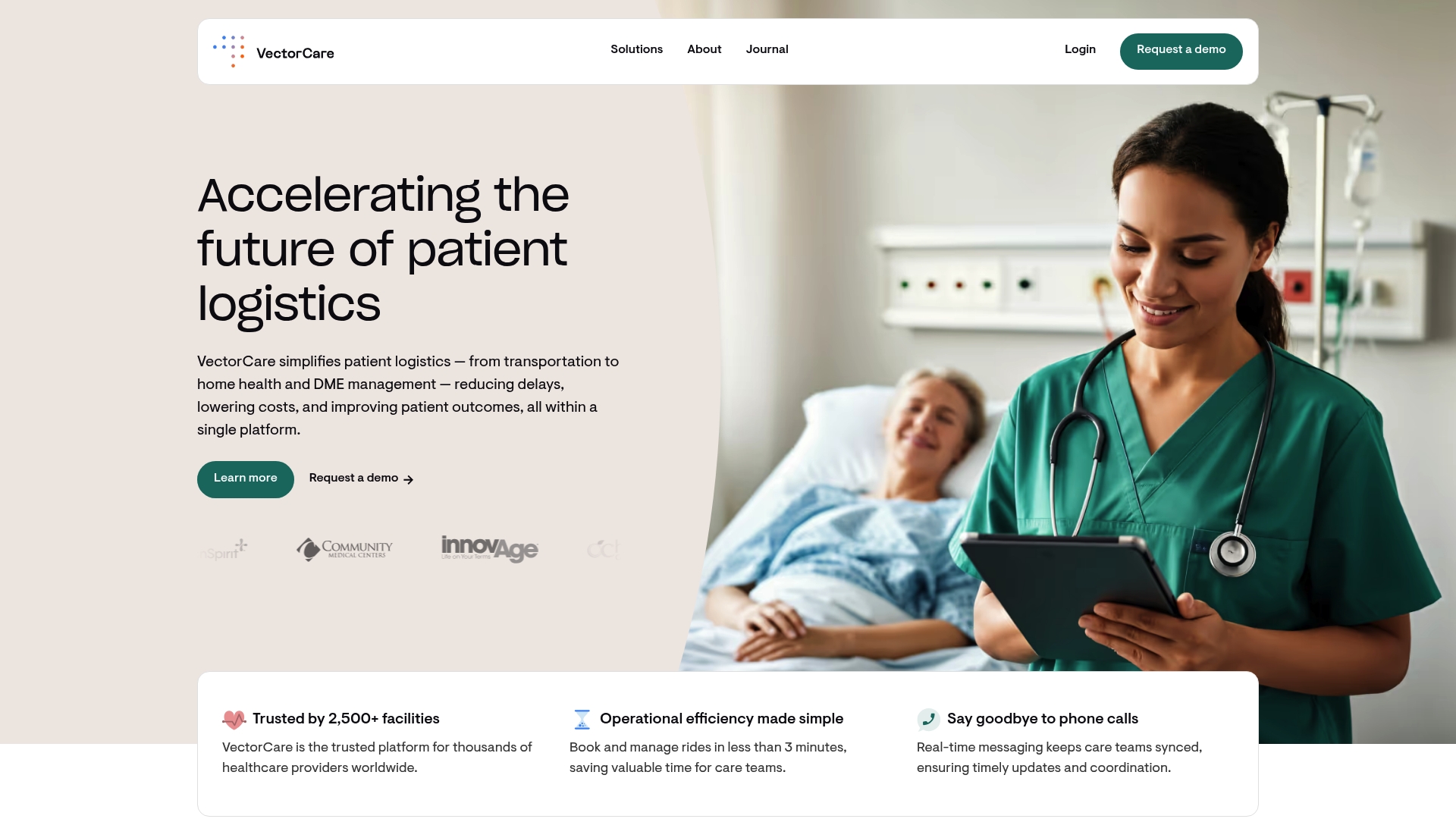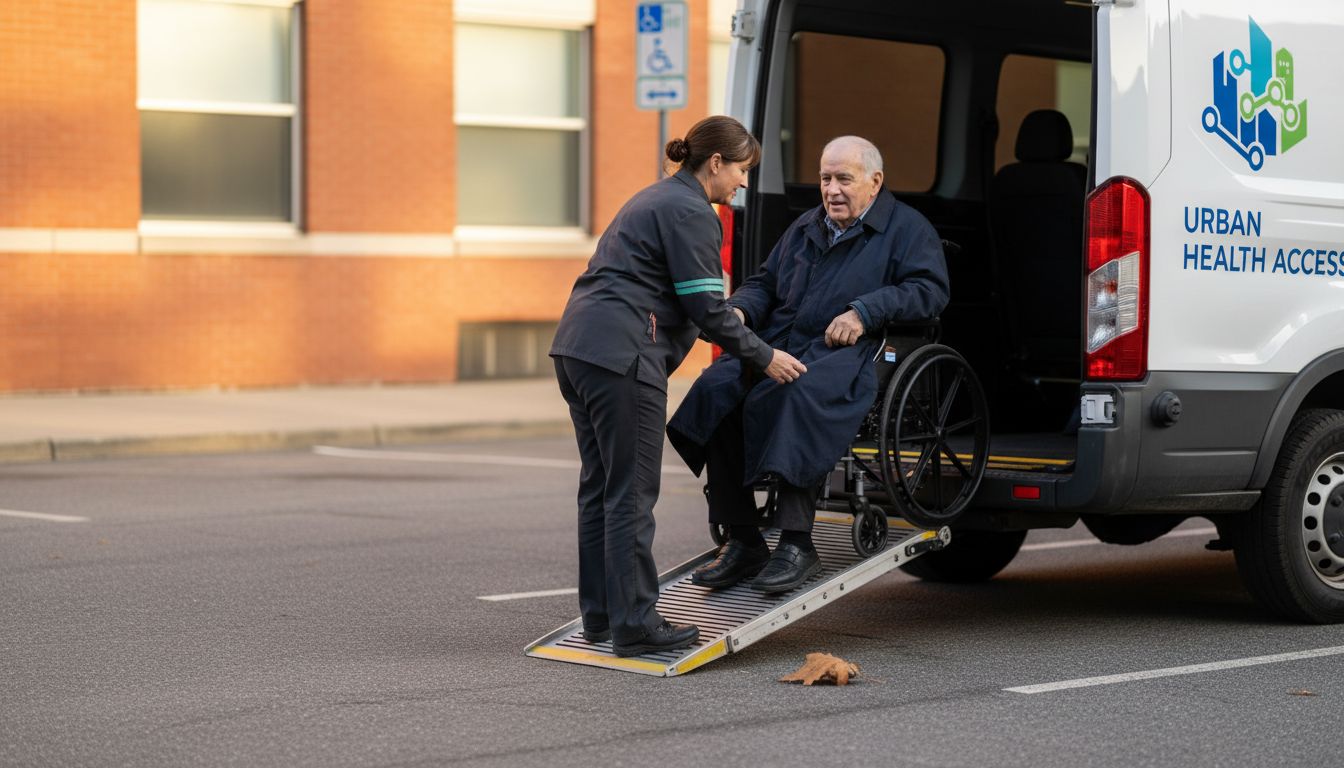7 Proven Strategies for Reducing Transportation Costs

Transportation costs are eating up budgets across industries and those numbers are only climbing. For every dollar spent on targeted training alone organizations save between $1.45 and $3.98. Surprised? Most people focus on fuel prices or cheaper vehicles, missing the bigger savings hiding in plain sight. The biggest reductions actually come from smarter strategies and a few overlooked tech moves that quickly add up.
Table of Contents
- Optimize Routes And Schedules
- Explore Alternative Transport Providers
- Invest In Technology For Efficiency
- Consolidate Shipments And Services
- Negotiate Contract Terms
- Implement Regular Training For Staff
- Monitor And Analyze Transportation Data
Quick Summary
| Takeaway | Explanation |
|---|---|
| Optimize routes for efficiency | Use intelligent routing strategies to minimize travel and reduce fuel consumption. |
| Diversify transport providers | Evaluate multiple transport options to leverage competitive pricing and performance. |
| Invest in advanced technology | Utilize software for tracking and predictive maintenance to enhance operational efficiency. |
| Consolidate shipments strategically | Combine shipments to lower costs and improve vehicle utilization across needs. |
| Regular staff training is crucial | Invest in employee development to enhance skills and operational performance, leading to cost savings. |
1: Optimize Routes and Schedules
Reducing transportation costs begins with strategic route and schedule optimization, a critical approach that directly impacts operational efficiency and financial performance. By implementing intelligent routing strategies, organizations can significantly minimize unnecessary travel, reduce fuel consumption, and maximize vehicle utilization.
The U.S. Department of Transportation emphasizes that effective route planning is fundamental to transportation cost reduction. Smart routing involves more than simply finding the shortest path between points. It requires a comprehensive analysis of multiple factors that influence transportation expenses.
Key considerations for route and schedule optimization include:
- Minimizing empty miles by consolidating trips and finding return load opportunities
- Analyzing real-time traffic patterns to identify the most efficient routes
- Implementing advanced scheduling software that can dynamically adjust routes based on changing conditions
Professional transportation managers recognize that manual route planning is increasingly obsolete. Modern technologies enable complex routing algorithms that can process vast amounts of data quickly, identifying optimal paths that human planners might overlook. These technological solutions consider variables such as traffic congestion, delivery windows, vehicle capacity, and fuel efficiency.
For organizations looking to dive deeper into transportation logistics, our guide on maximizing patient transportation efficiencies provides comprehensive insights into strategic route management.
The financial benefits of route optimization are substantial. By reducing unnecessary travel, companies can decrease fuel expenses, lower vehicle maintenance costs, and improve overall operational productivity. Moreover, efficient routing contributes to reduced carbon emissions, presenting both economic and environmental advantages.
Successful route and schedule optimization requires a systematic approach that combines technological tools, data analysis, and continuous performance monitoring. Organizations must be willing to invest in advanced routing technologies and regularly review their transportation strategies to maintain competitive efficiency.
2: Explore Alternative Transport Providers
Reducing transportation costs requires a strategic approach to selecting and managing transport providers. Organizations can achieve significant savings by diversifying their transportation network and carefully evaluating alternative providers.
According to the U.S. Department of Transportation, competitive bidding and multimodal solutions are crucial strategies for minimizing transportation expenses. This approach involves looking beyond traditional provider relationships and creating a flexible, cost-effective transportation ecosystem.
Key strategies for exploring alternative transport providers include:
- Conducting comprehensive market research to identify potential new providers
- Comparing pricing structures across multiple transportation services
- Evaluating provider performance metrics such as reliability, safety, and efficiency
Transportation managers should consider a diverse range of providers, from traditional logistics companies to emerging technology-driven platforms. Learn more about the advantages of a tech-driven transportation marketplace to understand how innovative solutions can transform cost management.
Negotiation plays a critical role in reducing transportation costs. Organizations should develop robust negotiation strategies that leverage competitive market dynamics. This might involve creating a competitive bidding process, requesting detailed pricing proposals, or establishing volume-based discounts with multiple providers.
Technology has transformed the way organizations approach transport provider selection. Advanced platforms now enable real-time provider comparison, performance tracking, and dynamic pricing analysis. These tools allow organizations to make data-driven decisions that optimize both cost and service quality.
It is essential to maintain a balanced approach when exploring alternative providers. While cost reduction is crucial, organizations must also prioritize reliability, safety, and service quality. The cheapest option is not always the most economical in the long term, especially when considering potential disruptions or service failures.
Regular review and reassessment of transport providers ensure that organizations remain agile and responsive to changing market conditions. By maintaining a flexible and strategic approach to provider selection, businesses can continuously optimize their transportation costs and operational efficiency.
3: Invest in Technology for Efficiency
Technology represents a powerful lever for reducing transportation costs, offering organizations sophisticated tools to streamline operations and maximize resource utilization. Modern technological solutions provide unprecedented capabilities for tracking, analyzing, and optimizing transportation workflows.
According to the U.S. Department of Transportation, strategic technology investments can dramatically transform transportation efficiency. This recognition underscores the critical role of technological innovation in cost management.
Key technological investments for transportation efficiency include:
- Implementing advanced GPS tracking systems to monitor vehicle locations and optimize routes in real-time
- Adopting predictive maintenance software to reduce unexpected vehicle downtime and repair expenses
- Integrating comprehensive fleet management platforms that provide holistic operational insights
Digital transformation enables organizations to move beyond traditional reactive approaches. Predictive analytics now allow transportation managers to anticipate potential challenges, make data-driven decisions, and proactively manage costs. Learn more about technology’s role in enhancing patient logistics to understand the transformative potential of smart technological solutions.
Cloud-based platforms have revolutionized transportation management by providing centralized, accessible systems that enable real-time collaboration and decision-making. These technologies eliminate geographical barriers and create more responsive, efficient operational frameworks.
The financial benefits of technological investments extend beyond immediate cost reductions. By implementing sophisticated tracking and management tools, organizations can achieve significant long-term savings through improved operational intelligence, reduced waste, and enhanced strategic planning.
Successful technology integration requires a comprehensive approach. Organizations must not only invest in advanced tools but also commit to ongoing training, system optimization, and a culture of continuous technological adaptation. The most effective transportation strategies view technology not as an expense, but as a strategic investment in operational excellence.
4: Consolidate Shipments and Services
Consolidating shipments and services represents a strategic approach to significantly reduce transportation costs. By combining multiple transportation needs into unified, efficient processes, organizations can dramatically lower their overall operational expenses.
According to the Federal Acquisition Regulation, consolidating small shipments into larger transportation lots can generate substantial economic benefits. This approach minimizes individual shipping expenses and maximizes vehicle utilization across different transportation requirements.
Key strategies for effective shipment and service consolidation include:
- Identifying complementary transportation needs within the organization
- Creating shared transportation schedules that maximize vehicle capacity
- Developing collaborative logistics networks with partner organizations
Explore how healthcare systems optimize patient logistics to understand the practical implementation of consolidation strategies.
Collaborative logistics has emerged as a powerful method for reducing transportation costs. By establishing partnerships with other organizations that have similar transportation routes or complementary delivery requirements, businesses can share transportation resources and infrastructure.
Technology plays a crucial role in enabling effective shipment consolidation. Advanced logistics platforms can analyze transportation data, identify potential consolidation opportunities, and create optimized routing strategies that minimize empty miles and maximize load efficiency.
Financial benefits extend beyond direct transportation cost reductions. Consolidated shipments lead to decreased fuel consumption, lower vehicle maintenance expenses, and reduced carbon emissions. Organizations can simultaneously achieve economic and environmental sustainability objectives through strategic consolidation approaches.
Successful shipment consolidation requires a comprehensive approach that combines technological tools, strategic planning, and inter-organizational collaboration. By viewing transportation as an integrated system rather than isolated individual trips, organizations can unlock significant cost-saving opportunities and create more resilient, efficient logistics networks.
5: Negotiate Contract Terms
Contract negotiation represents a critical strategy for reducing transportation costs. Strategic negotiation can unlock significant financial advantages, transforming standard service agreements into powerful cost-saving instruments.
According to the New York State Education Department, multi-year transportation contracts can provide substantial economic benefits. These long-term agreements create opportunities for more competitive pricing and enhanced service stability.
Key elements of effective contract negotiation include:
- Conducting comprehensive market research before initiating negotiations
- Establishing clear performance metrics that align with organizational goals
- Creating flexible contract structures that accommodate future operational changes
Successful negotiation requires a comprehensive understanding of market dynamics and service provider capabilities. Organizations must approach contract discussions with detailed data, performance benchmarks, and a clear vision of their transportation requirements.
Volume-based discounts represent a powerful negotiation strategy. By aggregating transportation needs and presenting providers with larger, consolidated service requirements, organizations can leverage their purchasing power to secure more favorable pricing structures.
Discover strategies for optimizing transportation logistics to enhance your negotiation approach and maximize cost-efficiency.
Technology has transformed contract negotiation processes. Advanced analytics platforms now enable organizations to model potential contract scenarios, predict cost implications, and develop more sophisticated negotiation strategies. These tools provide unprecedented insights into pricing mechanisms and service delivery potential.
Financial negotiation extends beyond simple price reduction. Sophisticated organizations seek comprehensive value propositions that include performance guarantees, service level agreements, and built-in mechanisms for continuous improvement. By focusing on total value rather than just upfront costs, transportation managers can develop more robust, long-term cost-management strategies.
6: Implement Regular Training for Staff
Regular staff training represents a critical yet often overlooked strategy for reducing transportation costs. By investing in comprehensive employee development, organizations can significantly minimize operational inefficiencies and enhance overall performance.
According to the Transportation Research Board, strategic training investments can generate substantial financial returns. For every dollar invested in training services, organizations can save between $1.45 and $3.98, translating into substantial annual cost reductions.
Key focus areas for effective transportation staff training include:
- Developing technical skills in route optimization and logistics management
- Enhancing fuel-efficient driving techniques
- Understanding advanced transportation technologies
Training programs should address both technical competencies and operational efficiency. This holistic approach ensures that staff members not only understand how to perform their tasks but also comprehend the broader economic implications of their daily decisions.
Explore how technology empowers healthcare professionals to understand the transformative potential of strategic training initiatives.
Technology-enabled training platforms have revolutionized staff development. Interactive simulations, virtual reality scenarios, and online learning modules provide cost-effective methods for delivering consistent, high-quality training across entire organizations.
Beyond immediate skill development, comprehensive training programs contribute to employee retention and reduced turnover. When staff feel invested in and understand their critical role in organizational efficiency, they are more likely to remain committed and perform at higher levels.
Successful training strategies require ongoing commitment. Organizations must view staff development as a continuous process, regularly updating training materials to reflect technological advancements, changing regulations, and emerging best practices in transportation management. By creating a culture of continuous learning, businesses can systematically reduce costs while maintaining high operational standards.
7: Monitor and Analyze Transportation Data
In the modern transportation landscape, data represents a powerful tool for driving cost reduction and operational efficiency. By systematically collecting, analyzing, and interpreting transportation performance metrics, organizations can make informed decisions that directly impact their bottom line.
According to the Federal Highway Administration, comprehensive data monitoring enables organizations to identify performance gaps, predict potential challenges, and develop targeted cost-reduction strategies.
Key elements of effective transportation data analysis include:
- Implementing real-time tracking systems for comprehensive performance monitoring
- Developing predictive analytics capabilities to forecast potential inefficiencies
- Creating standardized reporting mechanisms for consistent performance evaluation
Advanced data analytics transform raw transportation information into actionable insights. By leveraging sophisticated algorithms and machine learning technologies, organizations can uncover hidden patterns and optimization opportunities that traditional analysis might miss.
Learn more about creating end-to-end transparency in transportation services to understand the strategic value of comprehensive data monitoring.
Modern data analysis platforms provide unprecedented visibility into transportation operations. These sophisticated tools can track multiple performance indicators simultaneously, including fuel consumption, route efficiency, vehicle utilization, and driver performance, enabling a holistic approach to cost management.
Successful data monitoring requires a strategic approach. Organizations must invest in robust data collection infrastructure, train staff in advanced analytics techniques, and develop a culture that values data-driven decision-making. By treating transportation data as a strategic asset, businesses can continuously refine their operational strategies and achieve sustainable cost reductions.
The future of transportation cost management lies in intelligent, data-powered approaches that transform raw information into precise, actionable strategies.
Below is a comprehensive table summarizing the seven main strategies detailed in the article for reducing transportation costs, along with their approaches and benefits.
| Strategy | Key Approach | Primary Benefits |
|---|---|---|
| Optimize Routes and Schedules | Use advanced routing software, minimize empty miles, and adjust for real-time traffic patterns | Reduces fuel and maintenance costs; boosts efficiency |
| Explore Alternative Transport Providers | Compare multiple providers, conduct market research, and leverage technological platforms | Achieves competitive pricing; improves reliability |
| Invest in Technology for Efficiency | Implement GPS tracking, predictive maintenance, and fleet management platforms | Cuts operational waste; enhances decision-making |
| Consolidate Shipments and Services | Combine shipments, share resources, and utilize collaborative logistics networks | Lowers shipping expenses; increases vehicle utilization |
| Negotiate Contract Terms | Use market data and flexible contracts; seek volume-based discounts | Secures better rates; ensures service stability |
| Implement Regular Training for Staff | Provide ongoing training on operations, technology, and efficiency | Improves performance; saves $1.45-$3.98 per $1 invested |
| Monitor and Analyze Transportation Data | Use real-time tracking and analytics; develop standardized reporting | Identifies inefficiencies; supports informed strategies |
Unlock Real Savings and Efficiency in Healthcare Transportation
Struggling with high transportation costs and inefficient patient logistics? The strategies discussed in “7 Proven Strategies for Reducing Transportation Costs” highlight real challenges like route optimization, provider management, and the need for smarter data analytics. If manual coordination creates delays for your patients and adds to operational expenses, you are not alone. Many healthcare organizations are searching for ways to streamline processes and enable seamless communication between stakeholders.

Now is the ideal moment to transform your approach. VectorCare offers a unified digital platform built to solve these exact problems. Automate your patient transportation, simplify scheduling, and use real-time insights to make data-driven decisions that reduce costs. Want to see how advanced routing and consolidated vendor management can help your team? Learn more about our solutions for hospitals and health systems, or discover how our technology empowers smoother care coordination in our detailed overview. Visit VectorCare’s main site today, and see how much more efficient your healthcare logistics can be.
Frequently Asked Questions
What are some effective strategies for optimizing transportation routes?
Implementing intelligent routing strategies, minimizing empty miles, analyzing real-time traffic patterns, and using advanced scheduling software can significantly enhance route optimization and reduce costs.
How can I evaluate alternative transport providers to reduce costs?
Conduct comprehensive market research, compare pricing structures, and evaluate performance metrics such as reliability and efficiency to identify potential cost-saving transport providers.
What role does technology play in reducing transportation costs?
Investing in advanced technology, such as GPS tracking and predictive maintenance software, enables better monitoring and optimization of transportation workflows, thus reducing overall costs and enhancing efficiency.
Why is staff training important in transportation cost management?
Regular training helps enhance technical skills, promotes fuel-efficient driving techniques, and ensures employees are knowledgeable about advanced technologies, leading to reduced operational inefficiencies and improved performance.
Recommended
- 7 Ways to Lower NEMT costs for Medicare Advantage plans – VectorCare
- 7 Ways to Improve Outcomes for Medicare Advantage Members – VectorCare
- Maximizing Efficiencies Through Better Patient Logistics – VectorCare
- Reduce NEMT Fraud, Waste, and Abuse for Medicare Advantage Plans – VectorCare
- What Is Fleet Maintenance? A Comprehensive Guide - Apple Truck & Trailer



